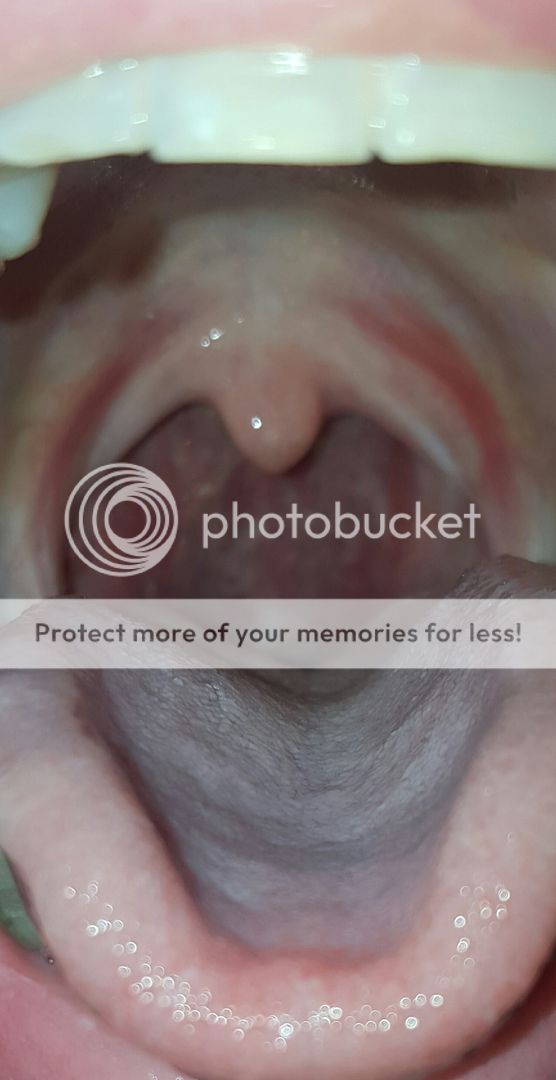I think I will add a picture of my own crimson crescent here (in the singular, because I only have one crimson crescent, located on one side of my throat):
The Crimson Crescent In My Throat:
The location of my crimson crescent roughy coincides with the area where I had the
herpangina sore throat from the respiratory virus I caught a decade ago — the virus that I am fairly sure led to my ME/CFS.
Herpangina sore throats are a type of sore throat involving red inflamed tissue on and around the back arch of the soft palette (called the palatoglossal arch), either on just one side of this arch, or on both sides.
It's useful to see some pictures: you can see images of herpangina sore throats
here.
When I caught my virus (which Dr Chia said was most likely an enterovirus, based on its array of symptoms), I only experienced the herpangina on one side of the palatoglossal arch in my throat — the same side where you now see my crimson crescent.
So this indicates that crimson crescents may be the long term sequelae of the original herpangina. The evidence I can offer for this is that my single crimson crescent appeared on the same side of the throat where my original herpangina sore throat red inflammation was located; but on the other side of my throat, where I had no herpangina, I have no crimson crescent.
This phenomenon of herpangina red inflammation later turning into crimson crescents may offer further evidence that the original virus remains chronically active in ME/CFS patients: the crimson crescents might conceivably be a tissue site containing a low level, smoldering enterovirus infection deriving from the original virus.
Herpangina sore throats are generally only caused by certain viruses of the enterovirus genus, namely coxsackievirus B, coxsackievirus A16, and enterovirus 71.
ME/CFS is of course strongly linked to coxsackievirus B.
More rarely herpangina may be due to echovirus (also from the enterovirus genus), parechovirus 1, adenovirus, and herpes simplex virus. Reference:
here.
I've had my tonsils out, by the way, which lends a different appearance to the throat.
The white tongue coating you see in my throat picture is not thrush, incidentally, but geographic tongue (migratory glossitis). My tongue coating appeared within weeks of catching the respiratory virus that led to my chronic fatigue syndrome, and this white coating is now a permanent symptom I have had for a decade.
There's very little research into geographic tongue, but I know a medical researcher who developed a similar persistent white tongue coating after catching a chronic viral infection similar to mine, and he put some of his tongue coating under a microscope, and was able to observe that the white coating comprised dead macrophages.

